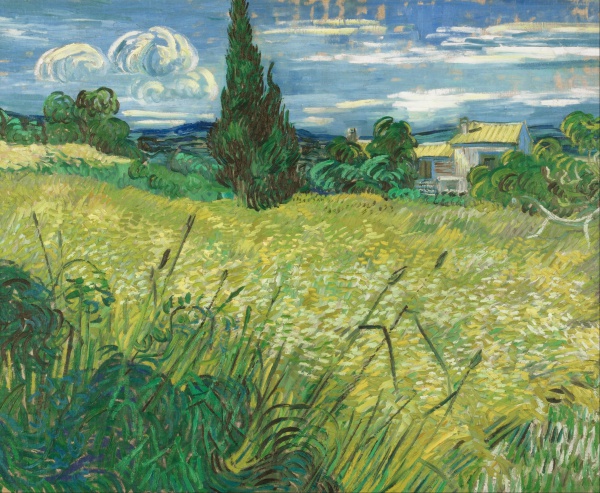Facts About Green Wheat Field with Cypress
"Green Wheat Field with Cypress" is a stunning oil-on-canvas painting by the renowned Dutch Post-Impressionist, Vincent van Gogh. This masterpiece is housed in the National Gallery Prague, specifically in the Veletržní Palace situated in the Holešovice district. Van Gogh completed this artwork in 1889 during his stay at the asylum of Saint-Paul-de-Mausole near Saint-Rémy in Provence.
The painting depicts a tranquil scene of a green wheat field starting to ripen to yellow. A prominent cypress tree stands majestically amidst the field, accompanied by a quaint white house, undulating mountains, and a blue sky speckled with white clouds, creating a picturesque landscape.
Van Gogh felt a profound connection to this painting, a sentiment he expressed in letters to his sister, wherein he vividly described its details. He even created an ink drawing of the scene and sent it to his brother Theo. Wheat fields held significant meaning for van Gogh; he painted them many times, viewing them as symbols of life's cyclical nature.
Art historian Ronald Pickvance notes that while the painting shares certain similarities with the works of artists like Monet and Renoir, van Gogh's use of color and brushstrokes in "Green Wheat Field with Cypress" is particularly distinctive. Unlike many Impressionist works, this painting does not carry revolutionary symbolism or psychological tension. Instead, it highlights van Gogh's unique style and his deep emotional connection to nature.

 Poland
Poland